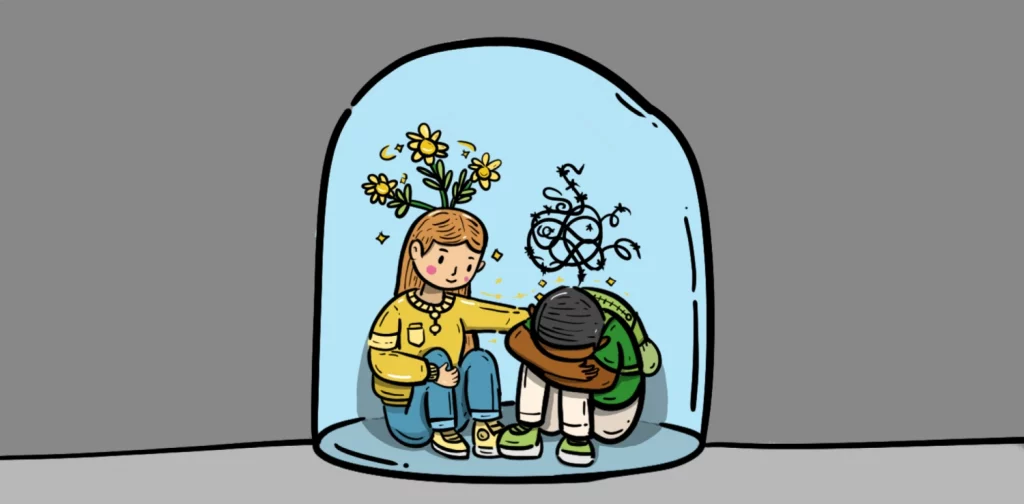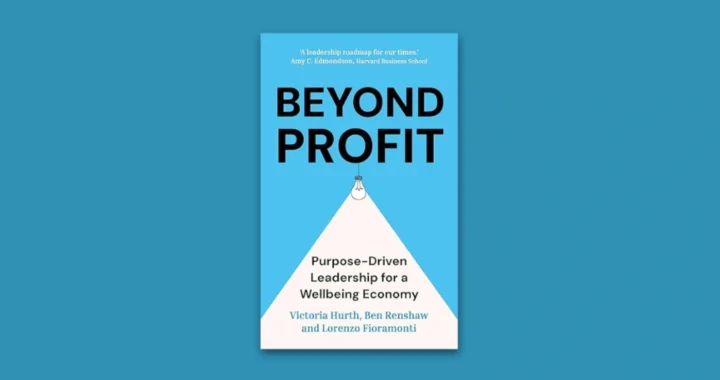Let’s Lift the Veil Off Children’s Mental Health Crisis

Illustration by Irhan Prabasukma.
We’ve all heard the adage “A healthy mind is essential for a healthy life.” However, mental health remains the most neglected public health concern today. Mental health crisis persists, with depression and anxiety being the two most common mental health disorders, costing the global economy one trillion dollars each year. Despite this, according to WHO estimates, globally, governments’ health expenditure on mental health is as low as 2%.
Depression and Anxiety in Children and Young People: A Canary in the Coal Mine
Approximately 1 billion people, including 14% of the world’s adolescents, suffered from mental disorders in 2019. Cases of depression and anxiety increased by more than 25% in 2020—the onset of the COVID-19 pandemic. Children and young people were disproportionately impacted since they were confined in their homes for over two years, negatively harming their socio-emotional health and wellbeing.
Some of the causes of childhood depression and anxiety are family violence, exploitation and abuse, social and economic inequalities, poverty, parental neglect, public health emergencies, and the climate crisis. Depression and anxiety affect all expanses of a child’s life, including academic performance, relationship with family and friends, and ability to participate in the community. Furthermore, research shows that children suffering from depression and anxiety are prone to substance abuse, leading to suicidal tendencies.
Unfortunately, children suffer in silence due to fear of rejection, misinterpretation, ridicule, and even shame. Parents, too, find themselves unequipped to recognize the early symptoms of childhood depression and anxiety and often brush them under the rug.
The COVID-19 pandemic further exasperated children’s mental health crisis since children became dependent on digital technologies for education, socialization, and entertainment. Consequently, this dependency made them vulnerable to online exploitation and abuse such as cyberbullying, online grooming, sexting, sextortion, and live streaming of child sexual abuse.
To summarize, the most common barriers to obtaining early treatment are a lack of understanding regarding mental health illnesses, knowledge of how to manage these concerns, the cost of treatment, and stigma.
What Children Have to Say About Mental Health
Mako, a 22-year-old from the Philippines, says, “I think what most people don’t understand about the mental health of young people like me or those younger than me is that mental health is important, even to us. Because there’s a stigma in our society where, just because you are a child, you don’t need attention, or you don’t need to be taken seriously, or your needs are neglected.”
Hanna, a 19-year-old from Ethiopia, says, “In our community, unemployment, peer pressure, and addictions are the main causes of mental health problems for young people. However, mental health problems are not seen as health impairments. They are mostly seen as spiritual problems. That’s why young people with mental problems don’t always get the proper treatment.”
Innoce, an 18-year-old from Zambia, says, “The most common mental health issue in my community is anxiety. For instance, I’m in grade 12. I’ve started being anxious about what I want to be. Will my parents take me to college? Will they afford to buy all that I need? You become anxious and think, ‘Now my goals have been shattered, my dreams have been shattered.’”
Mitigating the Mental Health Crisis with Socio-Emotional Learning Skills
We are living in highly complex times, where public health emergencies, disasters, wars, environmental degradation, economic crises, and climate change are making everyday living more and more uncertain. Therefore, it is imperative to ensure that children and young people are equipped with socio-emotional learning skills to help them identify their feelings, understand and communicate with others effectively, build strong relationships, and make empathetic decisions.
Studies show that school-based socio-emotional learning programs are effective in reducing the incidence of depression, anxiety, and post-traumatic stress disorders among adolescents. There is also evidence that it improves academic attainment along with reductions in antisocial behaviors and gender-based bullying. In this case, schools can play a crucial role in delivering mental health prevention and promotion interventions such as school-based socio-emotional learning programs, programs to identify and manage online risks, redressal mechanisms for bullying, and counseling services.
Additional Steps to Mainstreaming Children’s Mental Health
To achieve Sustainable Development Goal 3.4 by 2030, governments should build and strengthen mental health systems and services, roll out national-level educational and awareness campaigns to normalize mental health discussions, destigmatize its occurrence, make socio-emotional learning part of the school curriculum, and enact stronger laws and policies against child abuse and exploitation both online and offline.
Furthermore, mental health intricately intersects with many other sectors, including health, education, social welfare, and justice. To address the scourge of mental health, a multi-sectoral approach is required. We also need civil society, academia, the media, and, most importantly, adolescents and young people to actively take part in high-level consultations to develop an action plan to address the mental health crisis.
Children and young people have a critical role in ensuring they grow up healthy, educated, skilled, and, above all, safe. In their own words, “nothing about us without us.”
Editor: Kresentia Madina & Nazalea Kusuma

Join Green Network Asia Membership
Amidst today’s increasingly complex global challenges, equipping yourself, team, and communities with interdisciplinary and cross-sectoral insights on sustainability-related issues and sustainable development is no longer optional — it is a strategic necessity to stay ahead and stay relevant.
Join Now

 Weaving the Thread Between the Last Elephant and the Floods in Sumatra
Weaving the Thread Between the Last Elephant and the Floods in Sumatra  Bringing Buried Rivers Back to Life Through Daylighting
Bringing Buried Rivers Back to Life Through Daylighting  Prescribing Beyond Profit for CEOs’ Anxiety
Prescribing Beyond Profit for CEOs’ Anxiety  An Interview with May Tan-Mullins, CEO and Provost of University of Reading Malaysia
An Interview with May Tan-Mullins, CEO and Provost of University of Reading Malaysia  An Interview with Eu Chin Fen, CEO of Frasers Hospitality
An Interview with Eu Chin Fen, CEO of Frasers Hospitality  The UK Government’s Funding Package Plan to Tackle Youth Unemployment
The UK Government’s Funding Package Plan to Tackle Youth Unemployment